glossary
1/59
Earn XP
Description and Tags
Name | Mastery | Learn | Test | Matching | Spaced |
|---|
No study sessions yet.
60 Terms
abstract styles
depart from mimicking lifelike appearance to capture the essence of a form. An abstract artist may work from nature or from a memory image of nature’s forms and colors, which are simplified, stylized, perfected, distorted, elaborated, or otherwise transformed to achieve a desired expressive effect.
aesthetic
type of human experience that combines perception, feeling, meaning making, and appreciation of qualities of produced and/or manipulated object, acts, and events of daily life. Aesthetic experience motivates behavior and creates categories through which our experiences of the world can be organized
architecture
creates enclosures for human activity or habitation. It is three-dimensional, highly spatial, functional, and closely bound with developments in technology and materials. Since it is difficult to capture in a photograph, several types of schematic drawings are commonly used to enable the visualization of a building:
artistic associations
include self-defined groups, workshops, academies, and movements.
artistic changes
are divergences from tradition in artistic choices demonstrated through art-making processes, through interactions between works of art and audience, and within form and/or content. Tradition and change in form and content may be described in terms of style.
artistic traditions
are norms of artistic production and artistic products. Artistic traditions are demonstrated through art-making processes (utilization of materials and techniques, mode of display), through interactions between works of art and audience, and within form and/or content of a work of art.
atmospheric perspective
Through atmospheric perspective, objects in the far distance (often in bluish-gray hues) have less clarity than nearer objects. The sky becomes paler as it approaches the horizon.
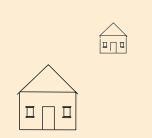
attribution
is identifying or categorizing an unknown work based on similarities to other works’ artist, culture, art-historical style, or object type.
audiences
are those who interact with a work of art as participants, facilitators, and/or observers. Audience characteristics include gender, ethnicity, race, age, socioeconomic status, beliefs, and values. Audience groups may be contemporaries, descendants, collectors, scholars, gallery/museum visitors, and other artists.
claim
n observation or assertion, usually stated in a thesis, that expresses an idea or point of view and is art historically defensible.
color
attributes → hue, value, saturation
composition
consists of interactive communicative elements of design, representation, and presentation within a work of art and the way the elements within the work are arranged to create the desired relationship of these elements in the work.
organization of forms in a work
content
of a work of art typically includes subject matter: visible imagery that may be formal depictions (e.g., minimalist or nonobjective works), representative depictions (e.g., portraiture and landscape), and/or symbolic depictions (e.g., emblems and logos) and may also include other visual properties involving abstraction or other non subject-driven work. Content may be narrative, symbolic, spiritual, historical, mythological, supernatural, and/or propagandistic (e.g., satirical and/or protest oriented).
context
includes original and subsequent historical and cultural situation of a work of art. Context includes information about the time, place, and culture in which a work of art was created, as well as information about when, where, and how subsequent audiences interacted with the work. The artist’s intended purpose for a work of art is contextual information, as is the chosen site for the work (which may be public or private), as well as subsequent locations of the work. Modes of display of a work of art can include associated paraphernalia (e.g., ceremonial objects and attire) and multisensory stimuli (e.g., scent and sound). Characteristics of the artist and audience—including intellectual ideals, beliefs, and attitudes, and aesthetic, religious, political, social, and economic attributes— are context. Patronage, ownership of a work of art, and other power relationships are also aspects of context. Contextual evidence may include audience response to a work of art. Contextual evidence may be provided through records, reports, religious chronicles, personal reflections, manifestos, academic publications, mass media, sociological data, cultural studies, geographic data, artifacts, narrative and/or performance (e.g., oral, written, poetry, music, dance, dramatic productions), documentation, archaeology, and research.
corroborate
to confirm or support the claim and/or thesis by providing evidence; adding proof or discussing examples that support or further the thesis and/or claim. Those examples can be derived from an analysis of a work of art, reference to other works of art, the context in which the work was produced, or subsequent valid scholarly interpretations.
design elements
are line, shape, color (hue, value, saturation), texture, value (shading), space, and form.
design principles
balance/symmetry, rhythm/ pattern, movement, harmony, contrast, emphasis, proportion/scale, and unity
diminution
In diminution of scale, successively smaller elements are perceived as being progressively farther away than the largest ones.
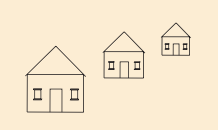
divergent perspective
In divergent or reverse perspective, forms widen slightly and imaginary lines called orthogonals diverge as they recede in space.
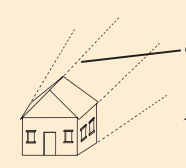
ephemeral arts
include processions, ceremonies, or ritual dances (often with décor, costumes, or masks); performance art; earthworks; cinema and video art; and some forms of digital or computer art. All impose a temporal limitation—the artwork is viewable for a finite period of time and then disappears forever, is in a constant state of change, or must be replayed to be experienced again.
expressionism
abstract styles
refers to styles in which the artist exaggerates aspects of form to draw out the beholder’s subjective response or to project the artist’s own subjective feelings.
graphic arts
are those that involve the application of lines and strokes to a two-dimensional surface or support, most often paper. Drawing is a graphic art, as are the various forms of printmaking. Drawings may be sketches (quick visual notes, often made in preparation for larger drawings or paintings); studies (more carefully drawn analyses of details or entire compositions); cartoons (full-scale drawings made in preparation for work in another medium, such as fresco, stained glass, or tapestry); or complete artworks in themselves. Drawings can be made with ink, charcoal, crayon, or pencil. Prints, unlike drawings, are made in multiple copies. The various forms of printmaking include woodcut, the intaglio processes (engraving, etching, drypoint), and lithography.
form
describes component materials and how they are employed to create physical and visual elements that coalesce into a work of art. Form is investigated by applying design elements and principles to analyze the work’s fundamental visual components and their relationship to the work in its entirety.
qualities of line, shape, color, light, texture, space, mass, volume, and composition → formal elements
function
includes the artist’s intended use(s) for the work and the actual use(s) of the work, which may change according to the context of audience, time, location, and culture. Functions may be for utility, intercession, decoration, communication, and commemoration and may be spiritual, social, political, and/or personally expressive.
hue
attribute of color
hues → different wavelengths of em energy → color wheel
primary hues (1) → red, yellow, blue
secondary hues (2) → mix of two primaries orange, green, violet
intermediate/tertiary hues (3) → mixture of a primary and a secondary
complementary → two colors directly opposite one another on the color wheel
warm colors → red, orange, yellow → appear to advance towards us
cool colors → blue, green, violet → recede
neutrals → black (absence of color) and white (mixture of all colors) not colors
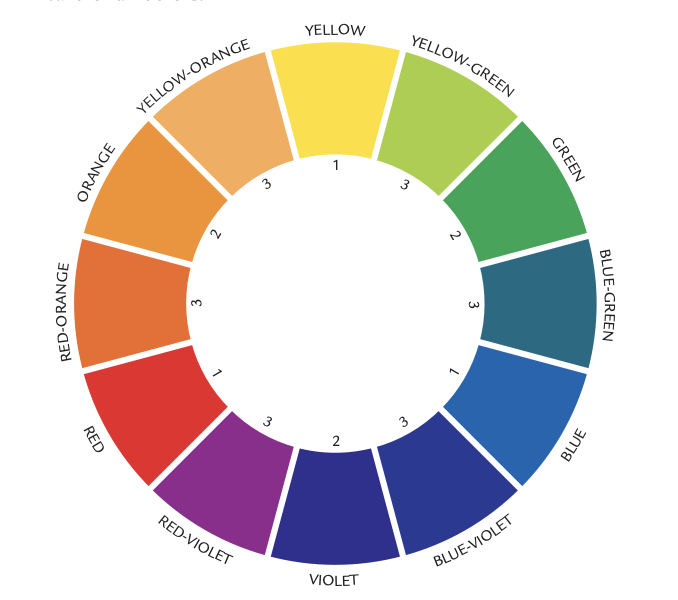
iconography
study of subject matter and identifications of symbols
idealization
a representational style
strives to create images of physical perfection according to the prevailing values or tastes of a culture. The artist may work in a representational style and idealize it to capture an underlying value or expressive effect.
illusionism
a representational style
refers to a highly detailed style that seeks to create a convincing illusion of physical reality by describing its visual appearance meticulously.
intuitive perspective
Intuitive perspective takes the opposite approach from divergent perspective. Forms become narrower and orthogonals converge the farther they are from the viewer, approximating the optical experience of spatial recession.
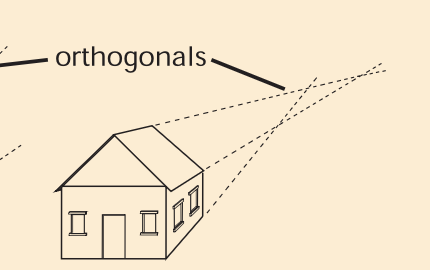
isometric drawings
oblique angles either from above (3-D exterior/bird’s eye view) or from below (3-D interior/worm’s eye view)
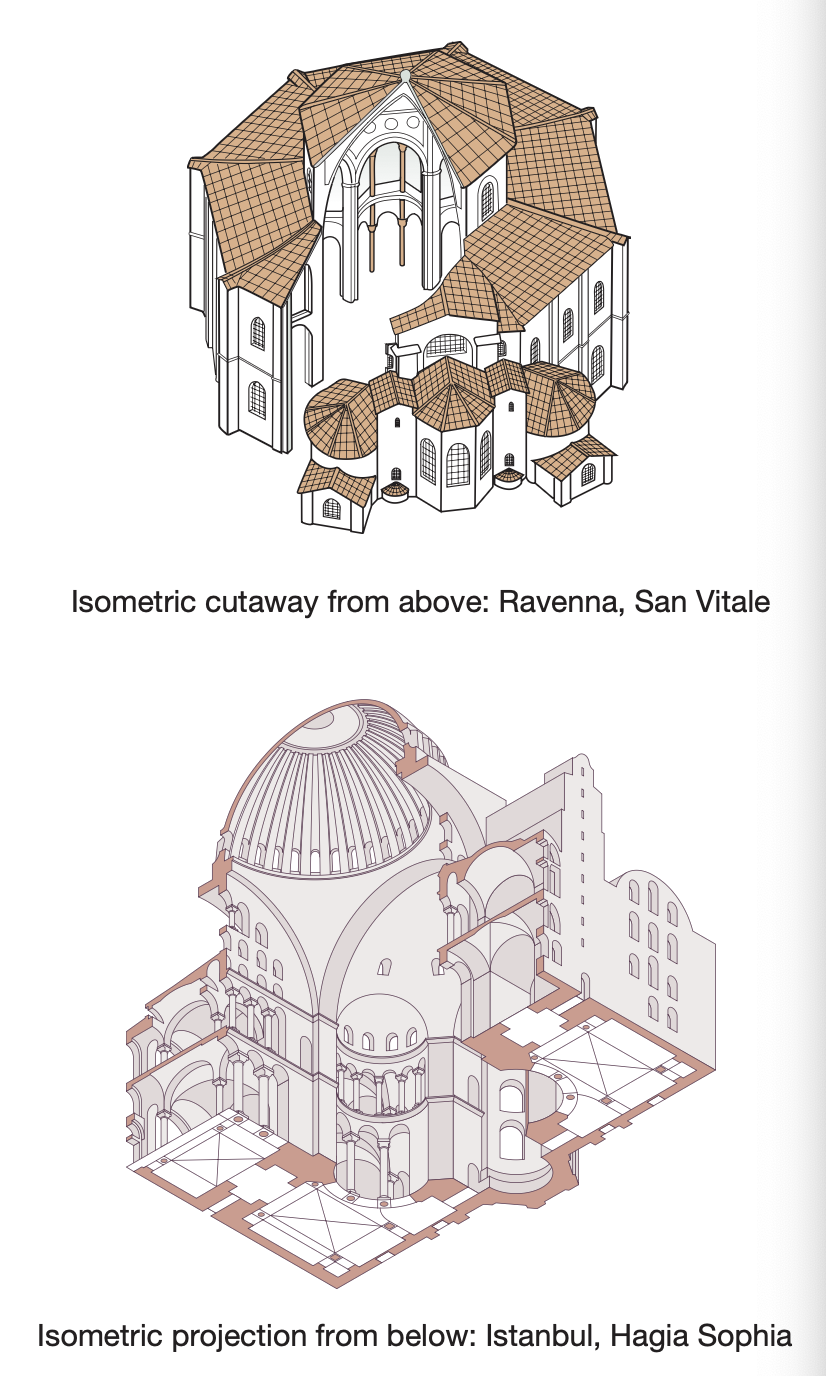
linear
describes both styles and techniques. In linear styles artists use line as the primary means of definition. But linear paintings can also incorporate modeling—creating an illusion of three-dimensional substance through shading, usually executed so that brushstrokes nearly disappear.
linear perspective
Linear perspective (also called scientific, mathematical, one-point and Renaissance perspective) is a rationalization or standardization of intuitive perspective that was developed in fifteenth-century Italy. It uses mathematical formulas to construct images in which all elements are shaped by, or arranged along, orthogonals that converge in one or more vanishing points on a horizon line.

mass
solid matter takes up space
volume is enclosed or defined space and can be either solid or hollow
can also be illusionistically represented on a 2-D surface
materials
(or medium) include raw ingredients (e.g., pigment, wood, and limestone), compounds (e.g., textile, ceramic, and ink), and components (e.g., beads, paper, and performance) used to create a work of art. Specific materials have inherent properties (e.g., pliability, fragility, and permanence) and tend to accrue cultural value (e.g., the value of gold or feathers due to relative rarity or exoticism).
medium (media plural) refers to the material or materials from which a work of art is made
overlapping
partially covered elements are meant to be seen as located behind those covering them.
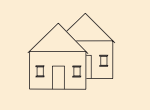
painterly
describes a style of representation in which vigorous, evident brushstrokes dominate, and outlines, shadows, and highlights are brushed in freely.
painting
includes wall painting and fresco, illumination (the decoration of books with paintings), panel painting (painting on wood panels), painting on canvas, and handscroll and hanging scroll painting. The paint in these examples is pigment mixed with a liquid vehicle, or binder. Some art historians also consider pictorial media such as mosaic and stained glass—where the pigment is arranged in solid form—as a type of painting.
period style
refers to the common traits detectable in works of art and architecture from a particular historical era. It is good practice not to use the words “style” and “period” interchangeably. Style is the sum of many influences and characteristics, including the period of its creation. An example of proper usage is “an American house from the Colonial period built in the Georgian style.”
photography
(literally, “light writing”) is a medium that involves the rendering of optical images on light-sensitive surfaces. Photographic images are typically recorded by a camera.
pictorial depth
(spatial recession) 3-D represented on flat surface → picture plane
area “behind” the picture plane → picture space and contains 3 zones foreground, middle ground, background
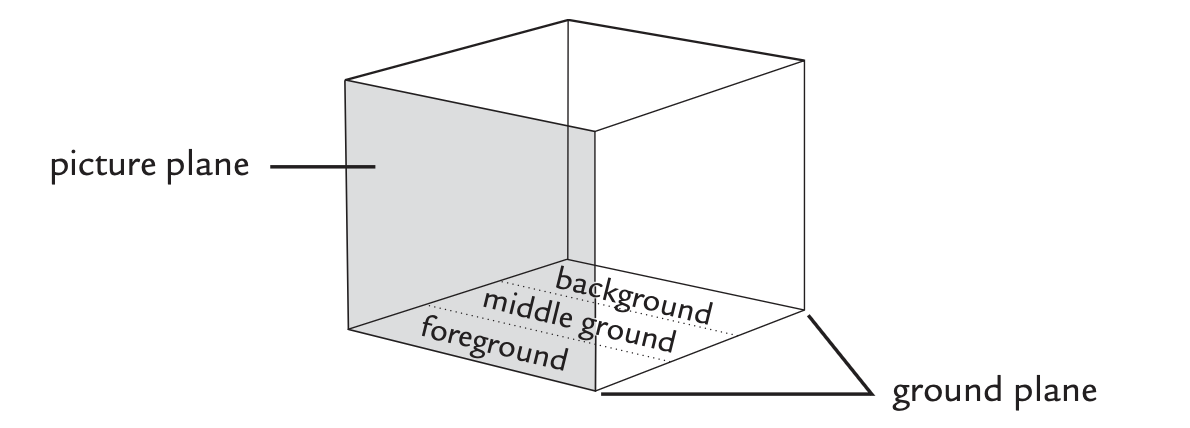
plans
drawing for architecture
depict a structure’s masses and voids, presenting a view from above of the building’s footprint or as if it had been sliced horizontally at about waist height.
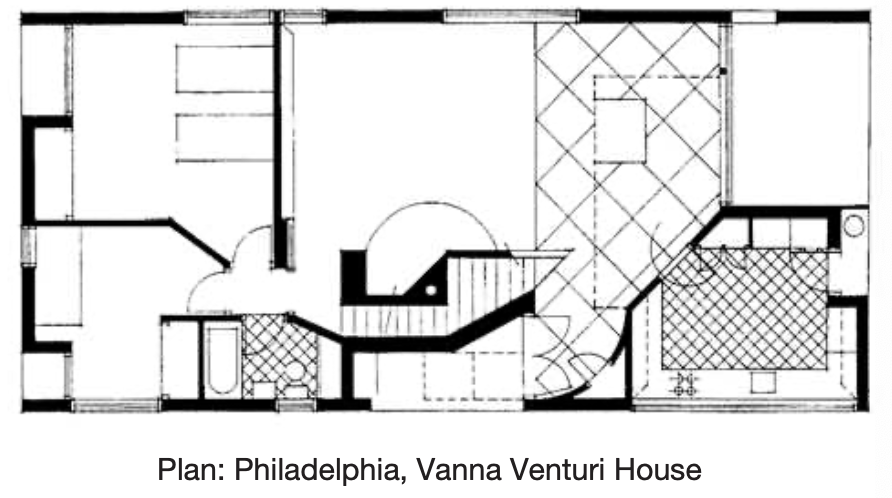
presentation
the display, enactment, and/or appearance of a work of art
qualify
is to refine the claim and/or thesis by explaining relevant connections, providing nuance, or considering diverse views. This includes, but is not limited to, addressing valid scholarly counterarguments to the claim and/or thesis.
realism (and naturalism)
a representational style
are terms that some people used interchangeably to characterize artists’ attempts to represent the observable world in a manner that appears to describe its visual appearance accurately. When capitalized, Realism refers to a specific period style
regional style
refers to stylistic traits that persist in a geographic region. An art historian whose specialty is medieval art can recognize Spanish style through many successive medieval periods and can distinguish individual objects created in medieval Spain from other medieval objects that were created in, for example, Italy.
representational styles
are those that describe the appearance of recognizable subject matter in ways that make it seem lifelike.
response to/reception of a work
is the reaction of a person or population to the experience generated by a work of art. Responses from an audience to a work of art may be physical, perceptual, spiritual, intellectual, and/or emotional.
saturation
saturation/intensity → a colors quality of brightness or dullness
high saturation → vivid and pure
low saturation → muddy and grayed

sculpture
is three-dimensional art that is carved, modeled, cast, or assembled. Carved sculpture is subtractive in the sense that the image is created by taking away material. Wood, stone, and ivory are common materials used to create carved sculptures. Modeled sculpture is considered additive, meaning that the object is built up from a material, such as clay, that is soft enough to be molded and shaped. Metal sculpture is usually cast or is assembled by welding or a similar means of permanent joining.
Sculpture is either free-standing (that is, surrounded by space) or in pictorial relief. Relief sculpture projects from the background surface of the same piece of material. High-relief sculpture projects far from its background; low-relief sculpture is only slightly raised; and sunken relief, found mainly in ancient Egyptian art, is carved into the surface, with the highest part of the relief being the flat surface.
sections
drawing for architecture
reveal the interior of a building as if it had been cut vertically from top to bottom.
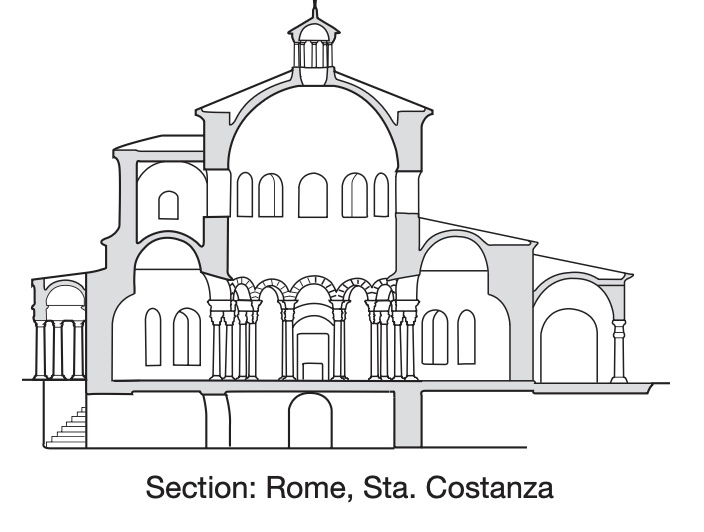
shape
attribute of form
2-D or flat defined by borders of an enclosing outline or contour (on a 3-d object can be perceived as a line)
shape can be geometric, biomorphic (suggesting living things sometimes called organic), closed, or open
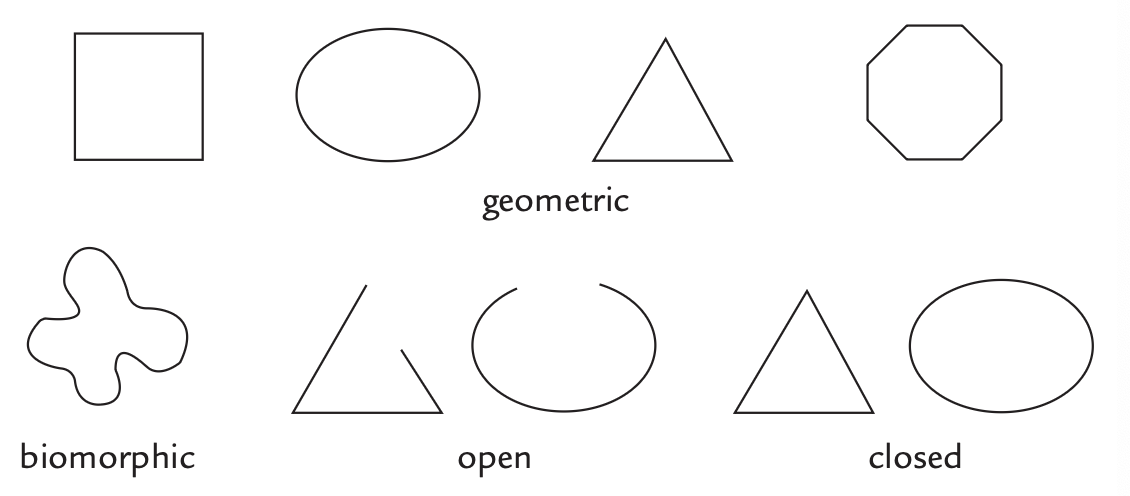
space
is what contains forms
may be actual and 3-D or fictional and represented illusionistically in 2-D using various systems of perspective
style
is a combination of unique and defining features that can reflect the historical period, geographic location, cultural context, and individual hand of the artist
symbols
images that take on meaning through association resemblance or convention
techniques
include art-making processes, tools, and technologies that are used to manipulate, transform, and/ or repurpose materials. Techniques vary across cultural contexts, time, and materials, and may be practiced by one artist or architect or may necessitate a group effort.
texture
attribute of form
tactile quality of surface → smooth, polished, rough, prickly, grainy, or oily
two forms → acc texture of the work and implied surface of objects
thesis
expresses an art historically defensible claim that responds to a prompt rather than merely restating or rephrasing the prompt. A thesis consists of one or more sentences located in one place.
value
relative degree of light/dark created by the amt of light reflected off an object
deeper values etc blah

vertical perspective
Vertical perspective stacks elements, with the higher ones intended to be perceived as deeper in space.
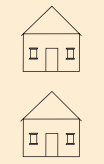
work of art
is created by the artist’s deliberate manipulation of materials and techniques to produce purposeful form and content, which may be architecture, an object, an act, and/or an event. A work of art may be two-, three-, or four-dimensional (timebased and performative). A work of art is considered to be a primary source.